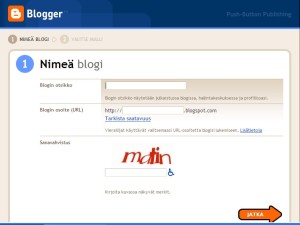Since time immemorial, people have used writing to express different messages. In the 21st century there has been a revolution about who gets their writing published – in the new millennium anyone can share their thoughts with the whole world. In your own individual blogs, you will gradually develop an eportfolio of the development of your English skills. Here are the slides we discussed in class for your reference. This presentation is a modified version of Australian teacher/librarian Tania Sheko’s slides. She kindly gave me the permission to use and edit her presentation.
STARTING YOUR OWN BLOGS
Watch this video, to think about the principles of blogging once more!
1. CHOOSE YOUR BLOG SERVER
- Blogger – you can sign in with you gmail.com username, possibly easier to use
- WordPress – this is the one I’m using for the Exe blog, has more options than Blogger
2. REGISTER A NEW BLOG
- ‘Luo blogi’ on Blogger, or ‘Get started here’ on WordPress
- If all this is new to you, DON’T PANIC – just read carefully what is said on the screen, and follow the instructions.

3. CHOOSE NAMES CAREFULLY
- for safety reasons, you are advised to only use your FIRST NAME as your username
- the title of your blog MUST BE decent and acceptable for school use
- try to get a URL for your blog that is as easy to remember as possible (the previous rule applies here, too – ie. no inappropriate names!)
4, CUSTOMISE YOUR BLOG
- make it into YOUR OWN ONLINE SPACE
- you can use ready-made themes, or change header pictures and colours if you like (NB. only use YOUR OWN or other free-to-use photos, check the CLASS WIKI for information on copyright!)
- you can add calendars and other widgets in the sidebar
- you will be able to change the appearance and design of your blog later, too!
- don’t worry, be brave to experiment!
5. WHEN YOU ARE DONE
- send the URL of your new blog to me by email so I can make a link list of all your blog in the sidebar of this joint class blog
- write your first blog post – it will be the corrected and edited version of your language learning history
GOOD LUCK AND HAVE FUN WITH CREATING YOUR BLOG!





